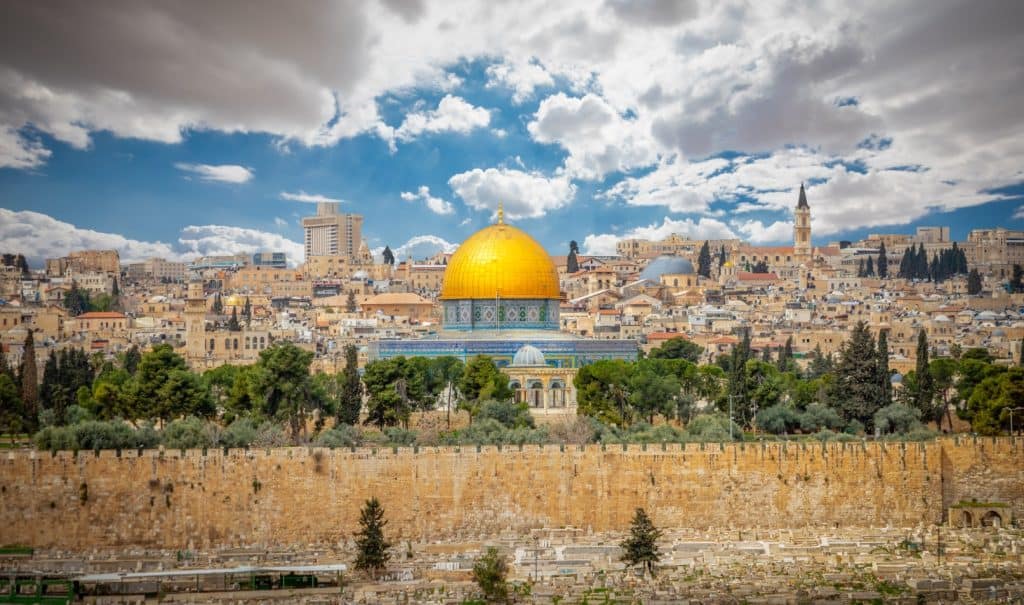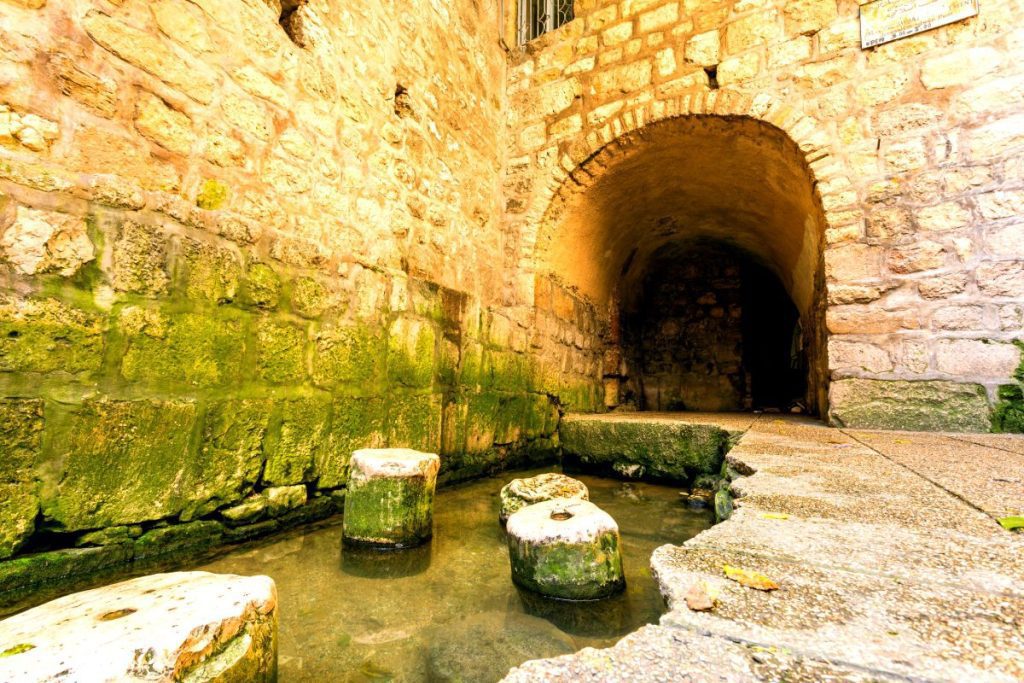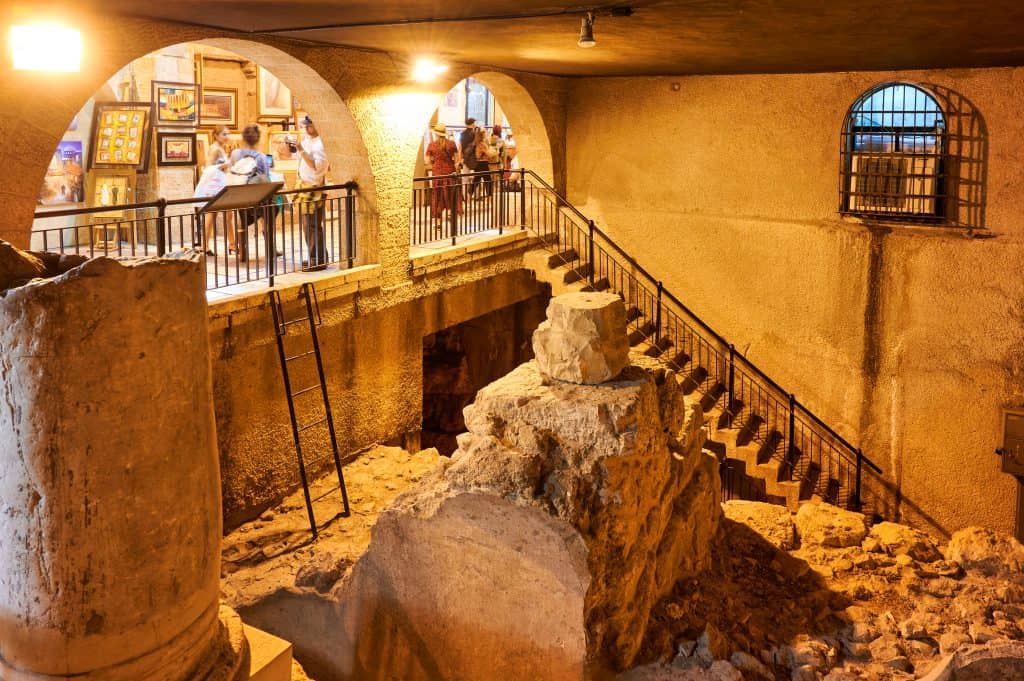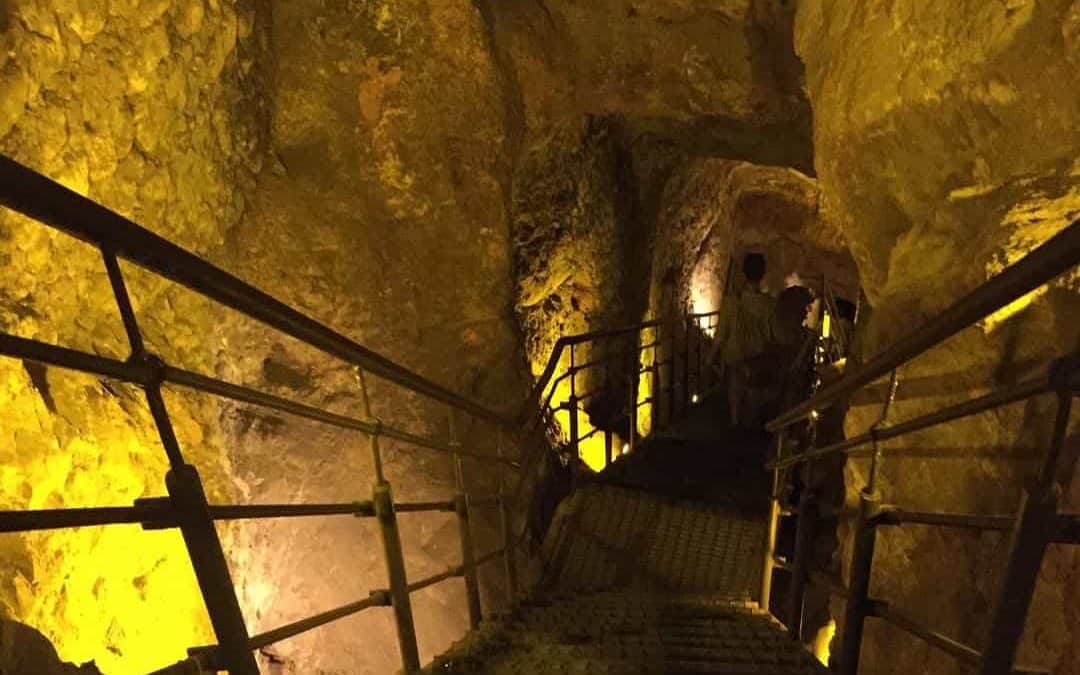The Gihon Spring, nestled just outside the city walls, is more than a mere water source—it’s a wellspring of history, culture, and the human spirit’s ingenuity. So join us as we delve into the captivating story of the Spring and its profound impact on the city’s past and present.
Jerusalem Ultimate Guide

1. Nature’s Gift: The Life-Giving Waters
So imagine a desert landscape where water is scarce and precious. Against this backdrop, the Spring emerges as a natural oasis, gushing forth cool and life-giving water. Furthermore, this source of sustenance not only quenched the physical thirst of the city’s inhabitants but also laid the foundation for the growth and development of ancient Jerusalem.
2. Archeological Revelations: Uncovering the Past
So, the Gihon Spring’s significance is in the water it provides and the stories it tells. Moreover, archeological excavations have revealed ancient structures, tunnels, and artifacts that reflect the city’s reliance on this precious resource. Warren’s Shaft, a vertical tunnel carved into the rock, is a testament to the ingenious engineering methods used to access the spring’s waters.
City of David

3. The Gihon Spring – King Solomon’s Coronation
In the biblical narrative, the Gihon Spring plays a pivotal role. It is said to be where Solomon was anointed as king, marking the transition of power from David to his son. This momentous event adds significance to the spring, intertwining it with the stories of Israel’s kings and the city’s destiny.
Jerusalem Archaeological Tour

4. Connection to Faith and Rituals
Beyond its practical importance, the Gihon Spring also holds spiritual significance. In ancient times, the spring’s waters were used in religious ceremonies, symbolizing purity and renewal. Its presence near the Temple Mount likely played a role in the rituals performed at the holy site.
5. The Gihon Spring – A Resilient Legacy
As you stand near the Gihon Spring today, consider the continuity of its legacy. Its waters have flowed through the ages, sustaining generations and witnessing the rise and fall of civilizations. The Gihon Spring’s enduring presence serves as a reminder of nature’s constancy in an ever-changing world.
Jerusalem's Ancient Water System

6. Visiting the Gihon Spring
Make your way toward the City of David, an archaeological park just outside the Dung Gate of the Old City. The Gihon Spring is a central feature of this park, nestled within the ancient landscape that tells the story of Jerusalem’s origins.
City of David Visitor’s Center:
So, upon arriving at the City of David Visitor’s Center, you’ll find a wealth of information about the park’s history and attractions. Here, you can gather insights into the significance of the Spring and its role in Jerusalem’s past.







